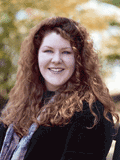


|

|
|
|
Home |
The Mil & Aero Blog
 Posted by John Keller Military technology never seems to last long in a vacuum. When one breakthrough system is developed, something able to counter its capabilities usually follows closely behind. We can see this phenomenon from ancient times. The invention of the stirrup -- every bit as significant as the machine gun and the atom bomb -- enabled soldiers to fight fast and hit hard from horseback. It wasn't long, however, until infantry learned to form squares with spears protruding outward to repel cavalry charges. The machine gun led to trenches and other concealment. Heat-seeking and radar-guided missiles? Enter flares and chaff dispensers to confuse the missiles' guidance systems. To counter visible-light sensors like cameras and the naked eye, soldiers for centuries have thrown up smoke screens, often with great affect. Smoke has met its match in recent years with the infrared sensor, which detects heat instead of reflected light. IR sensors are extremely effective at penetrating smoke, dust, and other obscurants. The problem is these sensors are progressively becoming less expensive and more widely available. The Army has developed separate smoke-emitting weapons to fool visible-light and infrared sensors, but has no one weapon that can counter both. How to regain the edge? Wired's Danger Room blog has a story entitled Army Looking for Infrared Smoke Screens that talks about efforts at the U.S. Army Aberdeen Proving Ground, Md., to develop a bi-spectral smoke/obscurant -- or one kind of smoke screen to hide soldiers from visible-light and infrared sensors. The Army has issued a Small Business Technology Transfer (STTR) solicitation open from 19 Feb. to 19 March for companies to solicit ideas on developing bi-spectral smoke/obscurant material. "This material will form an obscuring screen for the protection of soldiers and platforms against visible and infrared threats (heat seeking missiles, thermal viewer, laser guided missiles, sniper fire, etc.)," the solicitation states. Intensive chemistry and material science, breakthroughs in vapor phase synthesis, and nanotechnology may be involved in this new bi-spectral obscurant, Army researchers say. Now let's see what's eventually developed to counter this new weapon. 0 Comments:
<< Home |
Welcome to the lighter side of Military & Aerospace Electronics. This is where our staff recount tales of the strange, the weird, and the otherwise offbeat. We could put news here, but we have the rest of our Website for that. Enjoy our scribblings, and feel free to add your own opinions. You might also get to know us in the process. Proceed at your own risk. 
John Keller is editor-in-chief of Military & Aerospace Electronics magazine, which provides extensive coverage and analysis of enabling electronic and optoelectronic technologies in military, space, and commercial aviation applications. A member of the Military & Aerospace Electronics staff since the magazine's founding in 1989, Mr. Keller took over as chief editor in 1995.  Courtney E. Howard is senior editor of Military & Aerospace Electronics magazine. She is responsible for writing news stories and feature articles for the print publication, as well as composing daily news for the magazine's Website and assembling the weekly electronic newsletter. Her features have appeared in such high-tech trade publications as Military & Aerospace Electronics, Computer Graphics World, Electronic Publishing, Small Times, and The Audio Amateur.
Courtney E. Howard is senior editor of Military & Aerospace Electronics magazine. She is responsible for writing news stories and feature articles for the print publication, as well as composing daily news for the magazine's Website and assembling the weekly electronic newsletter. Her features have appeared in such high-tech trade publications as Military & Aerospace Electronics, Computer Graphics World, Electronic Publishing, Small Times, and The Audio Amateur.
 John McHale is executive editor of Military & Aerospace Electronics magazine, where he has been covering the defense Industry for more than dozen years. During that time he also led PennWell's launches of magazines and shows on homeland security and a defense publication and website in Europe. Mr. McHale has served as chairman of the Military & Aerospace Electronics Forum and its Advisory Council since 2004. He lives in Boston with his golf clubs.
John McHale is executive editor of Military & Aerospace Electronics magazine, where he has been covering the defense Industry for more than dozen years. During that time he also led PennWell's launches of magazines and shows on homeland security and a defense publication and website in Europe. Mr. McHale has served as chairman of the Military & Aerospace Electronics Forum and its Advisory Council since 2004. He lives in Boston with his golf clubs.
Previous Posts
Archives
|
|||||
Internet gems
THE MAE WEBSITE AUTHORS ARE SOLELY RESPONSIBLE FOR THE CONTENT AND ACCURACY OF THEIR BLOGS, INCLUDING ANY OPINIONS THEY EXPRESS, AND PENNWELL IS NOT RESPONSIBLE FOR AND HEREBY DISCLAIMS ANY AND ALL LIABILITY FOR THE CONTENT, ITS ACCURACY, AND OPINIONS THAT MAY BE CONTAINED HEREIN. THE CONTENT ON THE MAE WEBSITE MAY BE DATED AND PENNWELL IS UNDER NO OBLIGATION TO PROVIDE UPDATES TO THE INFORMATION INCLUDED HEREIN.
|
||||||
|
|
Home | About Us | Contact Us | Corporate Website | Privacy Policy | Courage and Valor Foundation | Site Map
Also Visit: Laser Focus World | Vision Systems Design | Industrial Laser Solutions Copyright © 2007: PennWell Corporation, Tulsa, OK; All Rights Reserved. | Terms & Conditions | Webmaster |